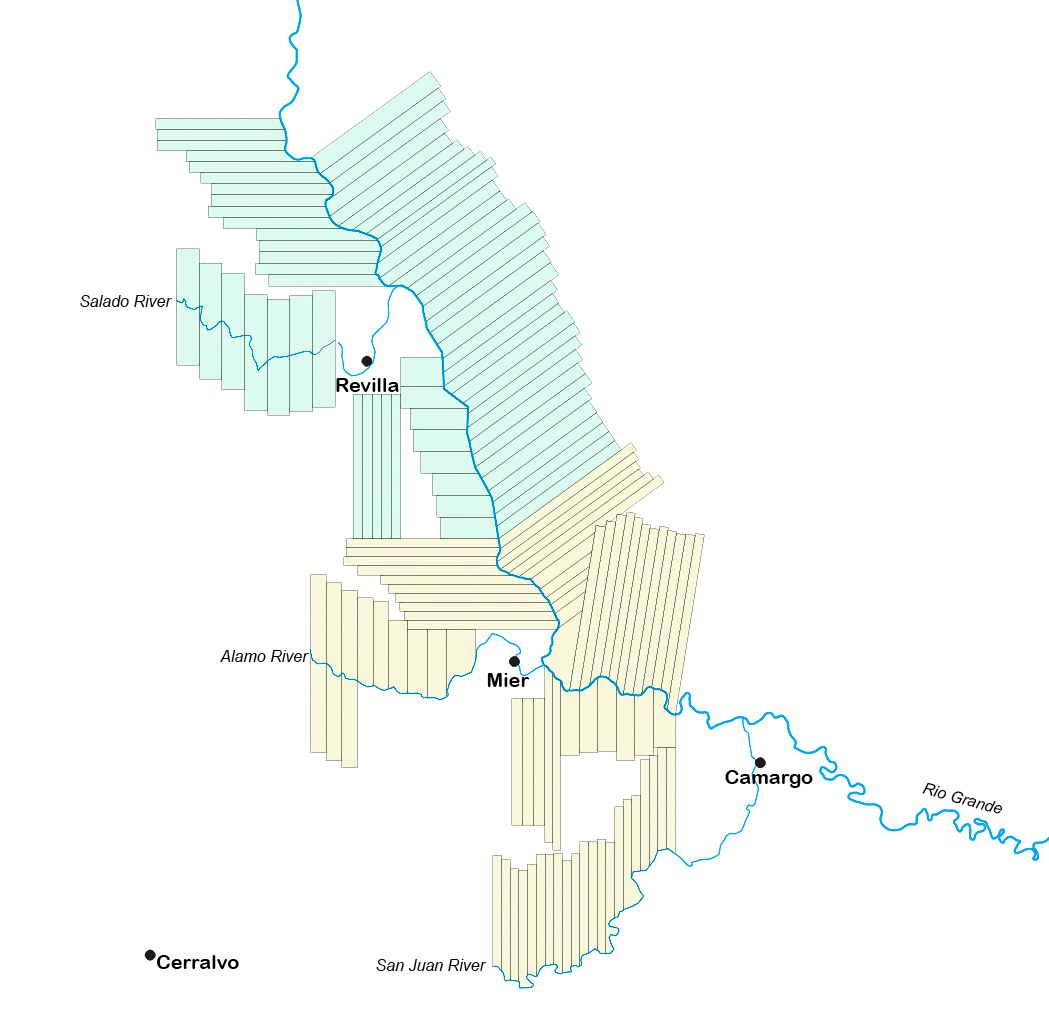![Theodore Gentilz, Stick Stock [Surveying in Texas Before Annexation to the United States]](https://freight.cargo.site/t/original/i/2de6d491bd42b8bb27bff81beae67ce1b760359b385b4764f35c26c1965df5e0/Surveyors_stick_stock_gentilz-1.jpg)
Embodiment and Possession
The mid-18th century saw the colonization of the province of Nuevo Santander, the northernmost frontier of New Spain which today corresponds to the region of South Texas between the Nueces River and the Rio Grande. Exploration and settlement of the area proceeded according to the Enlightenment spirit of the Bourbon Reforms, but the survey and possession of private tracts of land were rooted in older practices that placed the body within the landscape through ritual and the affective ties of family relationships.
The distribution of porciones (long strips of ranch land fronting the Rio Grande) during the Visita General of 1767 was a local affair that activated established familial networks and systems of patronage. Rather than coming from outside, colonial surveyors were chosen from within the community of closely-related families who had lived in nearby towns for generations. So-called “acts of possession” were necessary to legally gain title to the land - ceremonies which included pulling grass, digging the earth, throwing stones, and reciting certain words. Patricia Seed has observed that such ceremonies of possession revealed the cultural disposition of Spain towards its colonies as being concerned with people as much as land. Other scholars have noted that the survey procedures outlined in the Laws of the Indies have their precedents in Spain’s reconquest of Iberia from the Moors, a struggle of group identity as much as of territory.
Acts of possession in Nuevo Santander were a synthesis of these traditions, and they provide a framework for understanding the built environment of the region, in particular the stone fort-like houses constructed in the area around today’s Falcon reservoir. This project evaluates the survey of porciones in 1767 as a case study for locating concepts of embodied possession in land tenure patterns and regional vernacular architecture of 18th-century New Spain.
Conference Presentations
"Acts of Possession: Survey and Embodiment in Nuevo Santander." Society of Architectural Historians Annual International Conference, September 21, 2023.
![Porciones surveyed in the 1767 Visita General along the Rio Grande in the municipalities of Mier and Revilla.]()
The distribution of porciones (long strips of ranch land fronting the Rio Grande) during the Visita General of 1767 was a local affair that activated established familial networks and systems of patronage. Rather than coming from outside, colonial surveyors were chosen from within the community of closely-related families who had lived in nearby towns for generations. So-called “acts of possession” were necessary to legally gain title to the land - ceremonies which included pulling grass, digging the earth, throwing stones, and reciting certain words. Patricia Seed has observed that such ceremonies of possession revealed the cultural disposition of Spain towards its colonies as being concerned with people as much as land. Other scholars have noted that the survey procedures outlined in the Laws of the Indies have their precedents in Spain’s reconquest of Iberia from the Moors, a struggle of group identity as much as of territory.
Acts of possession in Nuevo Santander were a synthesis of these traditions, and they provide a framework for understanding the built environment of the region, in particular the stone fort-like houses constructed in the area around today’s Falcon reservoir. This project evaluates the survey of porciones in 1767 as a case study for locating concepts of embodied possession in land tenure patterns and regional vernacular architecture of 18th-century New Spain.
Conference Presentations
"Acts of Possession: Survey and Embodiment in Nuevo Santander." Society of Architectural Historians Annual International Conference, September 21, 2023.
